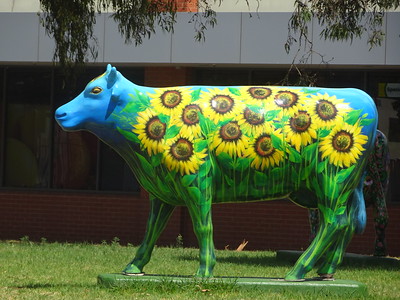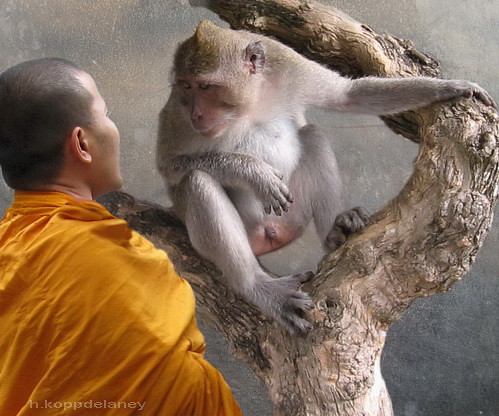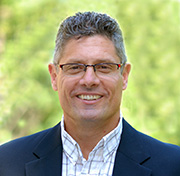Most Popular Blog Posts from the Last Twelve Months
 Here are the top blog posts (in descending order) from the previous twelve months. The short descriptions give some context for the posts and my intentions for writing them.
Here are the top blog posts (in descending order) from the previous twelve months. The short descriptions give some context for the posts and my intentions for writing them.
Thanks for reading.
Mike
When You Have Enough… The post describes behaviors that demonstrate you have enough and the benefits of having enough. And it calls out some problematic consequences when you don’t think you have enough. The main point of the post can be summarized in one sentence – When you have enough, it’s because you’ve decided you have enough. Enough of what, you ask? Well, I left that up to you.
Overcoming Not Invented Here (NIH), The Most Powerful Blocker of Innovation. With innovation, sometimes the novelty threatens which causes the Establishment to reject new ideas. The post described what NIH looks like so you could spot it at twenty paces. Here’s a summary of the post in three sentences. If you can’t understand why a novel idea never made it out of the lab, investigate the crime scene and you may find NIH’s fingerprints. If customers liked the new idea yet it went nowhere, it could be NIH was behind the crime. If it makes sense, but it doesn’t make progress, NIH is the prime suspect.
Is The Timing Right? I was surprised that this post was popular. The idea behind the post was to give examples of being too late and being too early so you could dial in the timing of your work. I thought the bias toward accelerating everything, pulling in projects, and doing everything in parallel would contradict the idea of a right time to do the work. But, people liked this one.
Stop, Start, Continue Gone Bad. This post was intended to poke fun the fundamental problem that we start far too many projects and finish too few or finish too slowly. I introduced the dangerous variant of Stop, Start, Continue called Start, Start, Continue and described its consequences. To battle that variant, I introduced the powerful antidote called Stop, Stop, Stop.
When you say yes to one thing, you say no to another. In the heat of battle, we want to make progress but we forget that our and our company’s capacity is limited. With this post I wanted to describe “opportunity cost” with straightforward yes-no language to help us remember to say no when yes is not the right answer. And I proposed a system to help do just that. Here’s the first step — Open your work calendar and move one month into the future. Create a one-hour recurring meeting with yourself. You just created a timeslot where you said no in the future to unimportant things and said yes in the future to important things.
How To Grow Talent. The objective of this sparse post was to give examples of how to use the work itself to help people grow and to show what a natural progression of growth can look like.
Image credit — Mike Beales
Credibility and Trust – a Powerful One-Two Punch – If You Build Them
 Credibility built – when the situation is not good, you say “the situation is not good.” And when things went poorly you say “things went poorly.”
Credibility built – when the situation is not good, you say “the situation is not good.” And when things went poorly you say “things went poorly.”
Trust built – when things go well you give away the credit.
Credibility built – when you provide a controversial perspective and three years later it turns out you were right.
Trust built – when you share your frustrations in confidence.
Credibility built – when you ground your argument in facts, especially inconvenient ones.
Trust built – when you say “I will keep that in confidence” and you do.
Credibility built – when you don’t know, you say “I don’t know.”
Trust built – when you do something that benefits others but comes at your own expense.
Credibility destroyed – when you tell people things are one way when they know it’s the other.
Trust destroyed – when you respond from a hardened heart.
Credibility destroyed – when you tell partial truths.
Trust destroyed – when you avoid doing the right thing.
Credibility and trust are a powerful one-two punch, but only if you build them.
Image credit — _Veit_
Are you a striver or a thriver?
 Strivers do what’s best for them.
Strivers do what’s best for them.
Thrivers do what’s right.
Strivers want more.
Thrivers want what they have.
Strivers can’t push back on people that are higher on the org chart or disagree with them.
Thrivers push back and disagree regardless of the org chart.
Strivers trade promotions for family.
Thrivers put family first – no exceptions.
Strivers are less than forthcoming to avoid conflict.
Thrivers put it straight over the plate to create the right conflict.
Strivers get led around by the nose.
Thrivers will punch you in the nose when you deserve it.
Strivers don’t have time for trust.
Thrivers put trust ahead of all things.
Strivers do the wrong things that come at your expense.
Thrivers do the right things that come at their expense.
Strivers step on your head.
Thrivers put you on their shoulders.
Strivers create headwinds to slow their peers.
Thrivers create tailwinds for all.
Strivers are afraid of thrivers because they cannot manipulate thrivers.
Thrivers don’t like strivers because they manipulate.
Strivers use the formal organizational structure to exert power.
Thrivers use their informal networks to make the right things happen.
Strivers blame.
Thrivers make it right.
Strivers are forgotten.
Thrivers are remembered.
Will you be forgotten or remembered?
Resource Allocation IS Strategy
 In business, we have vision statements, mission statements, strategic plans, strategic initiatives, and operating plans. And every day there are there are countless decisions to make. But, in the end, it all comes down to one thing – how we allocate our resources. Whether it’s hiring people, training them, buying capital, or funding projects, all strategic decisions come back to resource allocation. Said more strongly, resource allocation is strategy.
In business, we have vision statements, mission statements, strategic plans, strategic initiatives, and operating plans. And every day there are there are countless decisions to make. But, in the end, it all comes down to one thing – how we allocate our resources. Whether it’s hiring people, training them, buying capital, or funding projects, all strategic decisions come back to resource allocation. Said more strongly, resource allocation is strategy.
Take a look back at last year. Where did you allocate your capital dollars? Which teams got it and which did not? Your capital allocation defined your priorities. The most important businesses got more capital. More to the point – the allocated capital defined their importance. Which projects were fully staffed and fully budgeted? Those that were resourced more heavily were more important to your strategy, which is why they were resourced that way. Which businesses hired people and which did not? The hiring occurred where it fulfilled the strategy. Which teams received most of the training budget? Those teams were strategically important. Prioritization in the form of resource allocation.
Repeat the process for this year’s operating plan. Where is the capital allocated? Where is the hiring allocated? Where are the projects fully staffed and budgeted? Regardless of the mission statements, this year’s strategy is defined by where the resources are allocated. Full stop.
Repeat the process for your forward-looking strategic plans. Where are the resources allocated? Which teams get more? Which get fewer? Answer these questions and you’ll have an operational definition of your company’s forward-looking strategy.
To know if the new strategy is different from the old one, look at the budgets. Do they show a change in resource allocation? Will old projects stop so new ones can start? Do the new projects serve new customers and new value propositions? Same old projects, same old customers, same old value propositions, same old strategy.
To determine if there’s a new strategy, look for changes in capital allocation. If the same teams are allocated more of the same capital, it’s likely the strategy is also the same. Will one team get more capital while the others get less? Well, it’s likely a new strategy is starting to take shape.
Look for a change in hiring. Fewer hires like last year and more of a new flavor probably indicate a change in strategy. And if people flow from one team to another, that’s the same as one team getting new hires and the other team losing them. That type of change in resource allocation is an indicator of a strategic change.
If the resource allocation differs from the strategic plan, believe the resource allocation. And if the resource allocation is the same as last year, so is the strategy. And if there is talk of changing resource allocation but no actual change, then there is no change in strategy.
Image credit – Scouse Smurf
Some Ifs and Thens To Get You Through Your Day
 If you didn’t get what you wanted, why not try wanting what you got?
If you didn’t get what you wanted, why not try wanting what you got?
If the timing isn’t right, what can you change so it is right?
If it could get you in trouble, might you be on to something?
If it’s impossible, don’t bother.
If it’s easy, let someone else do it.
If there’s no possibility of bad things, there’s no possibility of magic.
If you need trust but have not yet secured it, declare failure and do something else.
If there is no progress, don’t push. Move the blocking agent out of the way.
If you don’t know where the cost is, you can’t design it out.
If the timing isn’t right, why didn’t you do it sooner?
If the project went flawlessly, you didn’t try to do anything meaningful.
If you know some people won’t like it, isn’t that reason enough to do it?
If it’s almost impossible, give it a go.
If it’s easy, teach someone else to do it.
If you don’t know where the waste is, you can’t get rid of it.
If you don’t need trust, it’s the perfect time to build it.
If you try the hardest thing first and it doesn’t work, at least you avoid wasting time on the easy stuff.
If you don’t know the number of parts in your product, you have too many.
If the product came out perfectly, you took too long.
If you don’t give it a go, how can you know it’s impossible?
If trust is in short supply, supply it.
If it’s easy, do something else.
If forgiveness is so much better than permission, why do we like to do things under the radar?
If bad things didn’t happen, try harder next time.
Image credit — Gabriel Caparó
Did you do anything different today?
 In that familiar situation, how did you respond in an unfamiliar way?
In that familiar situation, how did you respond in an unfamiliar way?
Instead of your usual yes, did you say no?
With your regular chair available in the conference room, why not sit in a different one?
Instead of using your right hand to brush your teeth, why not try your left? How would it feel?
When someone misbehaved in a meeting, how did you respond? Or did you?
If no one recognized your different behavior, was it different enough? Why not rerun the experiment?
With the same choices on the menu, what’s in the way of asking for a special order?
Instead of going to the meeting, did you ask someone to go in your place as a growth opportunity?
When you pay attention, you notice more opportunities to demonstrate novelty. Do you pay attention?
If it didn’t create a sensation in your body, did you do anything novel?
When you saw someone respond differently, did they like it when you praised their behavior?
When you have a chance to help someone be successful, why not help them?
When you have the chance to make a different choice, why not make it?
When you have a chance to respond differently, why not do it?
When you have a chance to feel uncomfortable, why not feel it?
One more question for you — What novelty did you demonstrate today?
Image credit — Mike Beales
How flexible are your processes and how do you know?
 What would happen if the factory had to support demand that increased one percent per week? Without incremental investment, how many weeks could they meet the ever-increasing demand? That number is a measure of the system’s flexibility. More weeks, more flexibility. And the element of the manufacturing system that gives out first is the constraint. So, now you know how much demand you can support before there’s a problem and you know what the problem will be. And if you know the lead time to implement the improvement needed to support the increased demand, in a reverse-scheduling way, you know when to implement the improvement so it comes online when you need it.
What would happen if the factory had to support demand that increased one percent per week? Without incremental investment, how many weeks could they meet the ever-increasing demand? That number is a measure of the system’s flexibility. More weeks, more flexibility. And the element of the manufacturing system that gives out first is the constraint. So, now you know how much demand you can support before there’s a problem and you know what the problem will be. And if you know the lead time to implement the improvement needed to support the increased demand, in a reverse-scheduling way, you know when to implement the improvement so it comes online when you need it.
What would happen if the factory had to support demand that increased one percent in a week? How about two percent in a week, five percent, or ten percent? Without incremental investment, what percentage increase could they support in a single week? More percent increase, more flexibility. And the element of the manufacturing system that gives out first is the constraint. So, now you know how much increased demand you can support in a single week and you know the gating item that will block further increases. You know now where to clip the increased demand and push the extra demand into the next week. And you know the investment it would take to support a larger increase in a single week.
These two scenarios can be used to assess and quantify a process of any type. For example, to understand the flexibility of the new product development process, load it (virtually) with more projects to see where it breaks. Make a note of what it would take to increase the system’s flexibility and ask yourself if that’s a good investment. If it is, make that investment. If it isn’t, don’t.
This simple testing method is especially useful when the investment needed to increase flexibility has a long lead time or is expensive. If your testing says the system can support five percent more demand before it breaks and you know that demand will hit the system in ten weeks, I hope the lead time to implement the needed improvement is less than ten weeks. If not, you won’t be able to meet the increased demand. And I hope the money to make the improvement is already budgeted because a budgeting cycle is certainly longer than ten weeks and you can’t buy what you need if the money isn’t in the budget.
The first question to ask yourself is what is the minimum flexibility of the system that will trigger the next investment to improve throughput and increase flexibility? And the follow-on question: What is needed to improve throughput? What is the lead time for that solution? How much will it cost? Is the money budgeted? And do we have the resources (people) that can implement the improvement when it’s time?
When the cost of not meeting demand is high, the value of this testing process is high. When the lead times for the improvements are long, this testing process has a lot of value because it gives you time to put the improvements in place.
Continuous improvement of process utilization is also a continuous reduction of process flexibility. This simple testing approach can help identify when process flexibility is becoming dangerously low and give you the much-needed time to put improvements in place before it’s too late.
Image credit — Tambako The Jaguar
Two Sides of the Same Coin
 Praise is powerful, but not when you don’t give it.
Praise is powerful, but not when you don’t give it.
People learn from mistakes, but not when they don’t make them.
Wonderful solutions are wonderful, but not if there are no problems.
Novelty is good, but not if you do what you did last time.
Disagreement creates deeper understanding, but not if there’s 100% agreement.
Consensus is safe, but not when it’s time for original thought.
Progress is made through decisions, but not if you don’t make them.
It’s skillful to constrain the design space, but not if it doesn’t contain the solution.
Trust is powerful, but not before you build it.
A mantra: Praise people in public.
If you want people to learn, let them make mistakes.
Wonderful problems breed wonderful solutions.
If you want novelty, do new things.
There can be too little disagreement.
Consensus can be dangerous.
When it’s decision time, make one.
Make the design space as small as it can be, but no smaller.
Build trust before you need it.
Image credit – Ralf St.
Projects, Products, People, and Problems
 With projects, there is no partial credit. They’re done or they’re not.
With projects, there is no partial credit. They’re done or they’re not.
Solve the toughest problems first. When do you want to learn the problem is not solvable?
Sometimes slower is faster.
Problems aren’t problems until you realize you have them. Before that, they’re problematic.
If you can’t put it on one page, you don’t understand it. Or, it’s complex.
Take small bites. And if that doesn’t work, take smaller bites.
To get more projects done, do fewer of them.
Say no.
Stop starting and start finishing.
Effectiveness over efficiency. It’s no good to do the wrong thing efficiently.
Function first, no exceptions. It doesn’t matter if it’s cheaper to build if it doesn’t work.
No sizzle, no sale.
And customers are the ones who decide if the sizzle is sufficient.
Solve a customer’s problem before solving your own.
Design it, break it, and fix it until you run out of time. Then launch it.
Make the old one better than the new one.
Test the old one to set the goal. Test the new one the same way to make sure it’s better.
Obsolete your best work before someone else does.
People grow when you create the conditions for their growth.
If you tell people what to do and how to do it, you’ll get to eat your lunch by yourself every day.
Give people the tools, time, training, and a teacher. And get out of the way.
If you’ve done it before, teach someone else to do it.
Done right, mentoring is good for the mentor, the mentee, and the bottom line.
When in doubt, help people.
Trust is all-powerful.
Whatever business you’re in, you’re in the people business.
Image credit — Hartwig HKD
When in doubt, look inside.
 When we quiet our minds, we can hear our bodies’ old stories in the form of our thoughts.
When we quiet our minds, we can hear our bodies’ old stories in the form of our thoughts.
Pay attention to our bodies and we understand our minds.
Our bodies give answers before our minds know the questions.
If we don’t understand our actions, it’s because our bodies called the ball.
The physical sensations in our bodies are trailheads for self-understanding.
Our bodies’ old stories govern our future actions.
If a cat sits on a hot stove, that cat won’t sit on a hot stove again. That cat won’t sit on a cold stove either. Our bodies are just like the cat.
Our mouths sing the songs but our bodies write the sheet music.
Our bodies make decisions and then our minds declare ownership.
When we’re reactive, it’s because our bodies recognize the context and trigger the old response.
When a smell triggers a strong memory, that’s our body at work.
Bessel was right. The body keeps the score.
Image credit — Raul AB
Why is it so difficult to get ready?
 The time to start getting ready is before we need to be.
The time to start getting ready is before we need to be.
We don’t get ready because the problem hasn’t yet kicked us in the head. It has only started getting ready to do so.
We don’t get ready because we don’t see the early warning signs. Like the meteorologist who doesn’t make time to look at the radar and satellite images, if we don’t look, we can’t see. And if we’re really busy, we don’t make time to look. What if it was part of our job to look at the satellite images? Who in our company should have that job?
We don’t get ready because we don’t heed the early warning signs. Seeing the warning signs is much different than justifying the reallocation of resources because someone says the tea leaves suggest an impending problem.
We will solve no problem until it’s too late to do anything else.
We don’t get ready because we forget that it takes time to get ready. We do so little getting ready, we’re unfamiliar with the work content and timeline of getting ready. We forget that getting ready is on the critical path of problem-solving.
We don’t get ready because everyone is fully booked and we have no excess capacity to allocate to getting ready. And by the time we free up the resources to get ready (if we can do that at all), we miss the window of opportunity to get ready.
We will solve a problem only after exhausting all other possibilities.
We don’t get ready because the problem is someone else’s. If we don’t have capacity to get ourselves ready for our problems why would we allocate the capacity to get ready for someone else’s?
We don’t get ready because we try to give our problem to someone else. Isn’t it easier to convince someone else to get ready than to do the getting ready ourselves?
We will solve no problem until we know we’ll get the credit.
We don’t get ready because problem avoidance won’t get us promoted, though putting out a fire that could have been avoided will.
If a problem is avoided, there is no problem. And since there’s no problem, there’s no need to avoid it.
We don’t get ready because there’s no certainty a problem will be a problem until we have it. And we can’t get ready to solve a problem once we have it. Getting ready requires judgment and trust – judgment by the person who sees the early warning signs and trust by the person who allocates the resources. It’s that simple.
Because we’ve conditioned people to be afraid to use their judgment, they don’t use it. And because we’ve conditioned people to be afraid to spend the time needed to build trust, they don’t build it.
Now that we have these two problems, how can we make it safe for people to use their judgment and spend the time needed to develop trust?
Image credit — Leonard J Matthews
 Mike Shipulski
Mike Shipulski